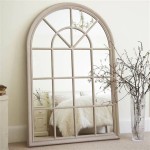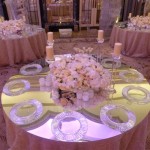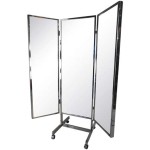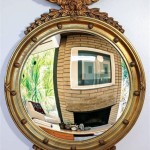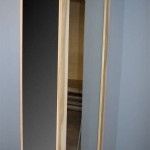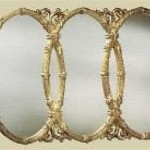Painting Designs on Mirrors: A Comprehensive Guide
Mirrors, beyond their primary function of reflection, offer a unique canvas for artistic expression. Painting designs on mirrors allows for the creation of personalized decorative pieces, adding a touch of individuality and visual interest to any space. The process, while seemingly straightforward, requires careful consideration of materials, techniques, and design principles to achieve a professional and lasting result. This article will explore the fundamental aspects of painting on mirrors, providing a comprehensive guide for both beginners and experienced artists.
The appeal of painting on mirrors stems from its versatility. Designs can range from simple geometric patterns and floral motifs to intricate landscapes and abstract compositions. The reflective surface of the mirror interacts with the paint, creating a dynamic visual effect that changes with the ambient light and viewing angle. Furthermore, the ability to easily erase or modify designs, depending on the paint type used, makes painting on mirrors a forgiving and adaptable art form.
Preparing the Mirror Surface
Proper preparation is paramount to ensuring the paint adheres correctly and the finished design is durable. The mirror surface must be clean, dry, and free of any contaminants such as dust, fingerprints, or grease. Failing to adequately prepare the surface can lead to uneven paint application, peeling, or a lack of adhesion. The following steps outline the recommended procedure for preparing a mirror for painting.
First, the mirror should be thoroughly cleaned with a glass cleaner specifically designed for mirrors. Avoid using abrasive cleaners or scouring pads, as these can scratch the reflective surface. Apply the cleaner to a lint-free cloth and wipe the entire surface of the mirror, paying particular attention to areas that may have fingerprints or smudges. Repeat this process until the mirror is visibly clean and streak-free.
Next, after the glass cleaner has evaporated completely, inspect the mirror for any remaining residue. If necessary, use a clean, dry lint-free cloth to buff the surface. For particularly stubborn residue, a solution of warm water and mild dish soap can be used, followed by a thorough rinsing with clean water and drying with a lint-free cloth. Ensure the mirror is completely dry before proceeding to the next step.
For enhanced adhesion, especially when using paints that may not adhere well to smooth surfaces, consider lightly etching the area where the design will be applied. This can be achieved using a glass etching cream, following the manufacturer's instructions carefully. Apply the etching cream to the designated area, allow it to sit for the recommended time, and then rinse it off thoroughly with water. Ensure the mirror is completely dry before proceeding. It's important to note that etching is a permanent process and will alter the reflective properties of the mirror in the etched area.
Finally, before applying paint, it is recommended to protect the surrounding area of the mirror with masking tape or painter's tape. This will prevent accidental paint splatters or smudges and ensure clean, crisp lines. Apply the tape carefully, ensuring it adheres firmly to the mirror surface. Overlap the tape slightly to prevent paint from seeping underneath.
Selecting the Right Paint
The choice of paint is crucial for achieving the desired aesthetic and ensuring the longevity of the design. Different paint types possess varying characteristics in terms of adhesion, durability, opacity, and ease of application. Several options are commonly used for painting on mirrors, each with its own advantages and disadvantages.
Acrylic paints are a popular choice due to their versatility, affordability, and availability. They adhere well to clean glass surfaces, dry quickly, and are water-based, making them easy to clean up. Acrylic paints can be thinned with water to create translucent washes or applied in multiple layers to achieve opaque coverage. However, acrylic paints may not be as durable as other options and may be susceptible to scratching or chipping, especially in high-traffic areas. Sealing the finished design with a clear acrylic sealant can improve its durability.
Enamel paints offer a more durable and glossy finish than acrylic paints. They are oil-based and adhere well to glass surfaces, providing excellent resistance to scratching and chipping. Enamel paints are available in a wide range of colors and can be used to create both opaque and translucent effects. However, enamel paints require mineral spirits or turpentine for cleanup and have a longer drying time than acrylic paints. Additionally, enamel paints may emit strong fumes during application, so proper ventilation is essential.
Glass paints are specifically formulated for use on glass surfaces and provide excellent adhesion, durability, and clarity. They are available in both water-based and solvent-based formulations, each with its own set of characteristics. Glass paints are often used for creating stained glass effects or for painting intricate designs on glassware. They are typically transparent or translucent, allowing light to pass through the paint. However, some glass paints are available in opaque versions. Glass paints can be more expensive than acrylic or enamel paints, but they offer superior performance and longevity.
Paint markers, also known as paint pens, are a convenient and precise option for creating detailed designs on mirrors. They are available in a wide range of colors and tip sizes, allowing for fine lines and intricate details. Paint markers are easy to use and require minimal cleanup. However, they may not be suitable for covering large areas or for creating opaque washes. The durability of paint marker designs can vary depending on the brand and type of marker used. Sealing the finished design with a clear sealant can improve its longevity.
When selecting paint, consider the desired aesthetic, the intended use of the mirror, and the artist's skill level. Experimenting with different paint types and techniques is recommended to determine the best approach for a particular project.
Techniques for Painting on Mirrors
Various techniques can be employed to create diverse effects and designs on mirrors. The choice of technique depends on the desired outcome, the artist's skill level, and the type of paint being used. Here are some common techniques for painting on mirrors.
Freehand painting involves applying paint directly to the mirror surface using brushes, sponges, or other tools. This technique allows for maximum creative freedom and allows for the creation of unique, one-of-a-kind designs. Freehand painting requires a steady hand and a good understanding of color mixing and blending. It is suitable for creating both simple and complex designs.
Stenciling involves using a stencil to create a defined shape or pattern on the mirror surface. The stencil is placed on the mirror, and paint is applied through the openings in the stencil. This technique is ideal for creating repetitive patterns, geometric designs, or lettering. Stencils can be purchased pre-made or created from scratch using materials such as plastic sheets or cardstock. Ensure the stencil is securely attached to the mirror surface to prevent paint from seeping underneath.
Reverse painting involves painting the design on the back of the mirror, so that it is visible through the glass. This technique creates a unique depth effect and protects the paint from scratches or damage. Reverse painting requires careful planning and execution, as the design must be painted in reverse order. It is often used for creating intricate designs or for preserving delicate artwork.
Marbling involves creating a swirling, marbled effect on the mirror surface using multiple colors of paint. This technique can be achieved by floating paint on water and then dipping the mirror into the water, or by applying paint directly to the mirror and swirling it with a brush or other tool. Marbling is a fun and creative technique that can produce stunning results.
Regardless of the technique used, it is important to work in a well-ventilated area and to protect the surrounding surfaces from paint splatters. Allow the paint to dry completely before handling the mirror or applying a sealant. Experimenting with different techniques and materials is encouraged to discover new and innovative ways to paint on mirrors.
Finally, remember that practice is key. Don't be discouraged if the first few attempts are not perfect. With patience and perseverance, anyone can master the art of painting designs on mirrors and create beautiful, personalized works of art.

Diy Painted Mirror Wallpaper Backgrounds Painting

Mirror Desighn Glass Painting Designs Etching Photo Frame Gallery

Etching Mirror Glass Designs Painting Window Design

Mirror Glass Art Painting Patterns Designs Etching

Painting On Mirrors An Easy Step By Guide

Painted My Mirror 3 Painting Art Decor

Incredible Mirror Glass Painting Designs Diy Handmade Ideas

How To Paint A Mirror With Pictures Wikihow

Pin By Haseen Khan On Pending Glass Painting Designs Fancy Mirrors Etching

How To Make A Diy Wood Frame Mirror With Mirrors Tea And Forget Me Nots

